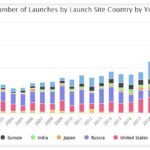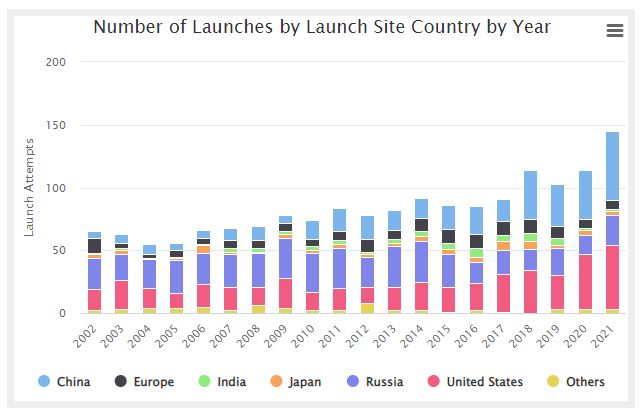2015
Perspective
As new operators and regional actors emerge, the mature players change their positioning in response. As governments map out a long-term, sustainable approach to exploration beyond the orbit of Earth, near-term programmatic and policy environments shift. As space investments generate returns, local and regional governments respond in order to better capture economic benefits. Understanding these dynamics yields an important perspective on opportunities and challenges.
2015 – EUMETSAT Space Budget
The European Organisation for the Exploitation of Meteorological Satellites (EUMETSAT) had a total budget of €337.6 million (US$462.1 million) for 2014. The largest amount of funding was directed to the Meteosat Third Generation (MTG) program with €136.4 million (US$186.7 million), followed by the EUMETSAT Polar System (EPS) program worth €78.0 million (US$106.8 million)
Number of Launches by Launch Site Country per Year
2015 – NASA Contract and Assistance Awards by State

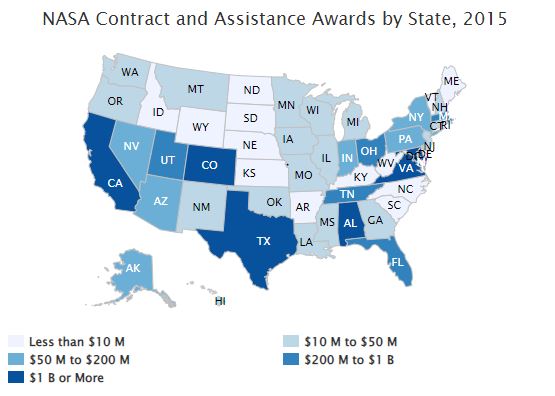
NASA provides funding through a NASA financial assistance program, contracts, and grants. This 2015 map of the United States shows which states were awarded money including how much. The amounts are in USDollars from 10M to 50M all the way up to 1B or more. … All NASA awards must state a budget period and period of performance.
Mass Launched by Intended Orbit
… Thank you for visiting The Space Report! The Authoritative Guide to Global Space Activity, Packed with Over a Decade of Data, Resources, and Information. VIEW SUBSCRIPTION PLANS Username Password Remember Me Forgot Password
European Space Industry Workforce by Country 2000 – 2020
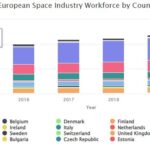
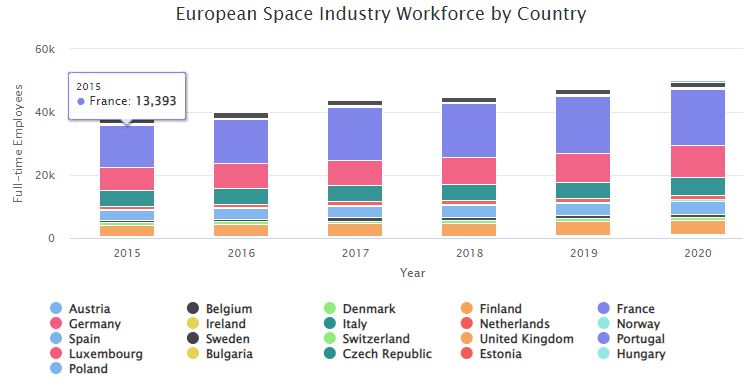
Stacked bar chart showing a twenty-year look at the European space industry workforce by country 2000 – 2020
NASA Civil Servant Workforce 2008-2017
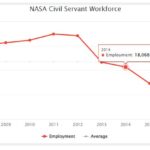
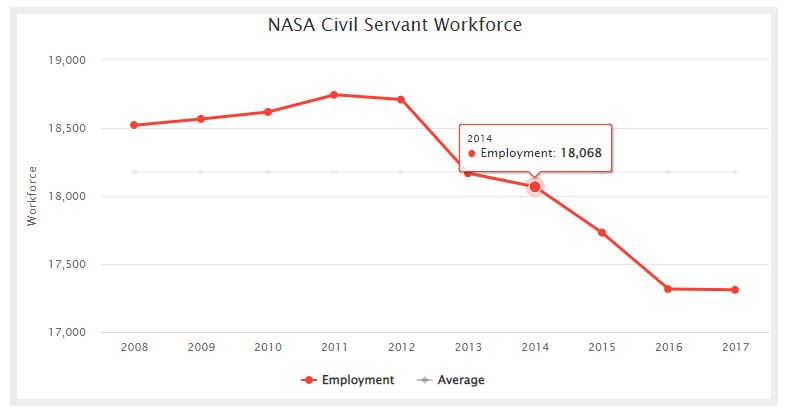
NASA Civil Servant Workforce chart showing the average and actual employment for the years 2008 through 2017.
2015 – Other Countries, Launch, Payload
Iran made another tentative foray into the global launch family during 2015. The country’s attempt . . .
2015 – China Launch, Human
China’s most recent human mission to space was in June 2013, when three taikonauts docked a capsule with the Tiangong-1 space station. Since then, China has announced plans to launch a second space station, Tiangong-2, to replace Tiangong-1. The Chinese government continued assembling and testing Tiangong-2 in 2015, intending to launch it into orbit sometime in 2016. A subsequent crewed mission, Shenzhou-11, would be launched later in 2016. The crew will dock with the Tiangong-2 and may stay in the space station as long as a month.
2015 – Russia Launch, Human
In 2015, Russia continued to be the only nation flying humans into space since June 2013. The Russian Soyuz capsule was conceived, designed, and first launched nearly five decades prior to 2015. The Soyuz space launch vehicle that boosted the Soyuz capsule into space has an even longer heritage. The first of its family launched as the world’s first intercontinental ballistic missile, and a succeeding generation launched Sputnik, the world’s first satellite. Capsule and launch vehicle continued to be modified over the years, enabling them to remain in service.
